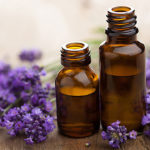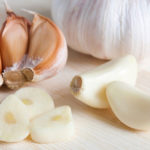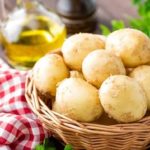For those living with kidney disease, diet is of utmost importance. An inappropriate daily menu can worsen your condition, so it’s crucial to know which vegetables are beneficial and which to avoid for a speedy recovery.
1. Vegetables Recommended for People with Kidney Disease
Broccoli
 Broccoli
Broccoli
Broccoli is a vegetable that should be included in the diet of those with kidney disease. It’s packed with nutrients like fiber, vitamins, and minerals, which are beneficial for overall health, especially for those with kidney issues.
Regular consumption of broccoli can effectively prevent tubular necrosis in the kidneys of patients with acute kidney disease.
According to research, 124 grams of cooked broccoli contains 19 mg of sodium, 176 mg of phosphorus, and 40 mg of potassium. These nutrients won’t put extra pressure on your kidneys.
Garlic
 Garlic
Garlic
Garlic is a wonderful addition to any diet, offering numerous health benefits. For those with kidney disease, garlic aids in digestion and stimulates the appetite.
Additionally, garlic has excellent anti-inflammatory properties due to its high content of antioxidants, Vitamin C, and B6. Approximately 9 grams of garlic (around 3 cloves) contain only 1.5 mg of sodium, 36 mg of potassium, and 14 mg of phosphorus, making it a kidney-friendly choice.
Cabbage
 Cabbage
Cabbage
Cabbage is another excellent choice for people with kidney disease, as it’s rich in vitamins, minerals, and powerful antioxidants.
Furthermore, the high fiber content in cabbage improves the digestive system, which is often compromised in those with kidney disease.
The low levels of potassium, phosphorus, and sodium in cabbage make it a safe option for kidney patients.
Bell Peppers
 Bell Peppers
Bell Peppers
Bell peppers are a fantastic choice for people with kidney disease. A single bell pepper (74g) contains only 3 mg of sodium, 19 mg of phosphorus, and 156 mg of potassium, yet it’s packed with nutrients that are particularly beneficial for kidney health.
The vibrant colors of bell peppers indicate their high vitamin C content, which provides powerful antioxidant and anti-tubular necrosis properties. Additionally, they’re an excellent source of vitamin A, which is essential for a strong immune system in those with kidney disease.
Turnips
 Turnips
Turnips
Turnips are a must-have in the diet of those with kidney disease. They’re low in potassium and phosphorus but rich in vitamins, especially vitamin B and various minerals, including a high content of vitamin C, which is crucial for kidney health.
Shiitake Mushrooms
 Shiitake Mushrooms
Shiitake Mushrooms
Shiitake mushrooms are highly beneficial for those with kidney disease. They can replace animal protein in the diet, making them easier to digest. Shiitake mushrooms are rich in vitamin B, copper, manganese, and selenium, and they provide easily digestible protein and fiber, which are beneficial for kidney health.
2. Vegetables to Avoid for People with Kidney Disease
Water Spinach
 Water Spinach
Water Spinach
Water spinach contains high levels of oxalic acid, which can cause disturbances in the filtering process at the kidneys, leading to kidney stones. Additionally, it interferes with the absorption of calcium and iron. Therefore, it’s best to avoid water spinach if you’re dealing with kidney disease.
Water spinach also contains purines, which increase uric acid levels in the blood, leading to an increased risk of kidney stones.
Amaranth
 Amaranth
Amaranth
While amaranth is known for its cancer-fighting properties, it’s not a good choice for those with kidney disease.
Amaranth contains high levels of oxalic acid and purines, which can harm kidney function and negatively affect those undergoing treatment for kidney disease.
Celery
 Celery
Celery
Celery is known to contain high levels of phytoestrogens, which can negatively impact kidney function. When consumed by those with kidney disease, these compounds can disrupt hormones and lead to thyroid issues, affecting the kidney’s regulatory function in the body.
Swiss Chard
 Swiss Chard
Swiss Chard
Swiss chard is another vegetable that should be avoided by those with kidney disease. Like the others on this list, it contains high levels of oxalic acid, which can hinder the kidney’s waste excretion process and potentially worsen kidney disease.
Curly Kale
 Curly Kale
Curly Kale
While curly kale is generally considered healthy, it can pose serious complications for those with kidney disease due to its extremely high oxalic acid content. If you’re dealing with kidney issues, it’s best to remove curly kale from your daily menu.
3. Dietary Considerations for People with Kidney Disease
 Dietary Considerations for People with Kidney Disease
Dietary Considerations for People with Kidney Disease
Here are some dietary considerations for people with kidney disease to keep in mind:
- Reduce Salt Intake: Limit your consumption of salt, soy sauce, fish sauce, and monosodium glutamate. The maximum recommended intake is 4g/day.
- Limit Fluid Intake: Adjust your fluid intake based on the amount of urine excreted daily, plus the amount of water lost through skin and breath.
- Moderate Energy Intake: For adults, aim for 30-35 kcal/kg/day, and for children, 70-80 kcal/kg/day.
- Protein: Limit protein intake to 0.6-0.8g/kg/day if you have elevated blood urea levels. If your blood urea levels are normal, aim for 1g/kg/day.
- Fat: You can increase your fat intake compared to a regular diet to compensate for energy needs. Aim for lipids to make up 20-25% of your total energy intake.
Source: Nam Dinh Department of Health
How to Effectively Treat Fishbone Issues at Home
Everyone loves feasting on the deliciousness of fish during the holidays. But, unfortunately, choking on fish bones is an unavoidable issue that may lead to devastating consequences if left unattended for a prolonged period. Let’s see how Dien May Xanh can help us out when fish bones get stuck in our throat.
Dangers of Microwaving Certain Foods
Many of us rely on microwaves to quickly prepare meals or snacks, but caution must be taken as some foods can be dangerous to health when heated in this appliance. Breast milk, broccoli, defrosted fruit, and other items should not be placed in microwaves, so it’s important to educate oneself on which foods are safe for use in this appliance.



































